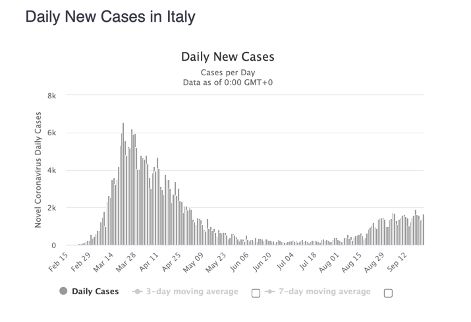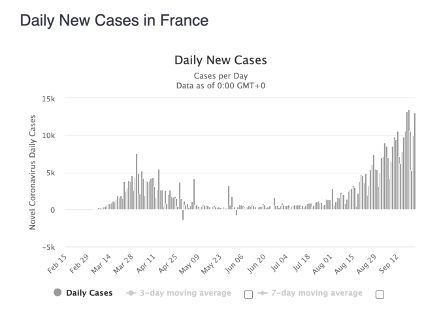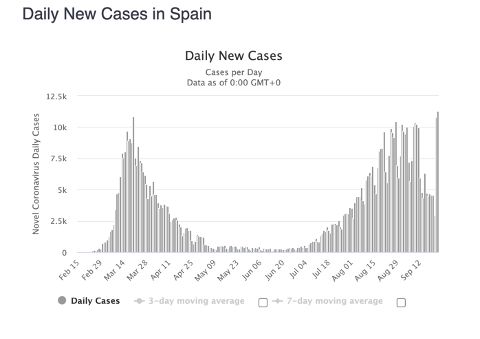Covid-19. What is happening in France, Spain and Italy
The world is entering the final part of one of the most eventful years of the 21st century, and covid-19 continues to be a part of the “new normal”.
Since June, travel within the EU has been fairly lenient, with heightened measures taken to contain and track the movements of travelers from certain “red zone” countries and areas within the countries.
However, despite any and all official safety precautions, some EU countries are now starting to show signs of relapse into the thralls of the pandemic, while others are seemingly recovering quite efficiently.
There are various reasons for the discrepancies in data across the EU, including data collection methods, comprehensive testing, and enforcement of travel restrictions and safety precautions among populaces.
Italy
In the early stages of the pandemic, from March to April, Italy was making news worldwide with the high number of cases and covid-related deaths despite the strict measures that were taken to enforce the nationwide quarantine. The country was in mourning, and the rest of the world was watching, afraid of taking a blow with an impact similar to what Italy experienced.
Looking back at the data from March and comparing it to numbers elsewhere in the world today throughout the months and up until today, Italy has done well in recovering the nation and working to minimize the spread of covid-19 at a stage where many around the world have lost vigilance.

Photo: Worldometer
Rhetoric used to discuss the virus, the extent of enforcement of safety measures, and diligent testing systems are some of the most important factors that were necessary at the very first signs of the crisis in order to contain the unfamiliar virus and foster a collective national mentality upon which people of a country can work together to make it through.
In the EU, and countries like Spain and France in particular, active cases and deaths are rising again.
France

Photo: Worldometer
While Italy has 46,114 active cases, France currently has 356,144 active cases of covid-19 as of 23 September and over 10,000 new cases daily, compared to 1,000 new cases recorded on 23 July. France has a surprisingly high death rate, 25% of closed cases resulted in death (31,459 out of 124,997 total closed cases), which is much higher than the world average of 4%.
Since last month, there has been a slight increase in deaths per day, but the average number of deaths per day for September is less than 100. However, there were no new reported recoveries on 23 September, but 13,072 new cases were identified in the same day. Now in France there are more “red zones” than not – this occurs when “the incidence level is more than 50 positive cases per 100,000 inhabitants over the past seven days,” according to The Connexion, a French news outlet. The coming weeks may see new travel restrictions both to and from France.

Photo: The Connexion
Spain
Nearby, Spain is experiencing a rise in cases. The number of daily new cases was higher on 23 September than at the first peak on 20 March (11,289 compared to 10,854). Total deaths amount to 31,034, with a 7-day moving average of 113.
There is a serious lack of data for the country, with none available on closed, recovered, or active cases. This gap in statistics is allegedly due to outdated methods of data collection, which might prove problematic, as data collection has been found to be crucial in identifying possible outbreaks and for understanding the patterns and movement of infection.

Photo: Worldometer
While no country has yet achieved a tried and true vaccine, and some are still experiencing the effects of the virus worse than others, the data has shown that the EU has a rising number of cases.
The coming months may see heightened restrictions and reinforcement of lockdowns, and it is crucial that both governments and the public remain cautious and conscious about the spread of the virus.








